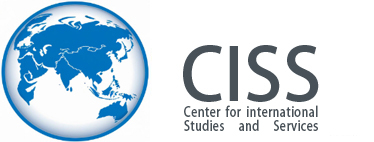
Caught between the warring parties: Eritreans and the Tigray conflict
Disclaimer: The views and opinions expressed in this article are those of the author and do not necessarily reflect the opinion of CISS or its members.
How can vulnerable populations in conflict be protected? How can we classify military conscripts sent to war by an unaccountable leader? The special position of Eritreans in Ethiopia’s Tigray conflict forces us to reflect about these questions and demonstrates the complexity of contemporary conflicts. February 4, 2021 marked three months of conflict between Ethiopia’s federal government under prime minister Abiy Ahmed and the Tigray regional government. According to UN estimates, about 2.3 million people in Tigray are currently in need for immediate humanitarian assistance, including Eritrean refugees living in camps along the border to Ethiopia. In addition, it is estimated that around 20,000 Eritrean refugees are missing after two refugee camps in Tigray were attacked by Ethiopian federal troops.
Although Ethiopia’s prime minister Abiy declared the confrontation’s final offensive last year, the drastic consequences of this crisis continue to be borne by the Tigray civilian population and Eritrean refugees. Furthermore, the initial intra-state confrontation has developed into a regional tinder box with Eritrean and alleged Somali involvement on Ethiopia’s side. This situation also draws attention to long-term human security in conflict zones and the accountability of governments in war. In Tigray, the Hitsats massacre killing 300 Eritrean refugees in November 2020 demonstrated how refugees are particularly at risk in conflict situations. Having already endured the long trek to neighboring Ethiopia and possessing no social safety net, refugees are particularly vulnerable to violence from all conflict parties. In addition, the Tigray conflict is likely to introduce new and aggravate existing hostilities due to the intensity and brutality employed by the warring parties. However, this crisis also draws attention to Eritrea’s special position in this conflict. Eritrea’s military apparatus is sustained by national conscripts which forcibly recruits Eritreans and retains many conscripts for life. Part of these conscripts is currently deployed to fight alongside Ethiopian forces and is involved in severe war crimes. Their deployment has been compared to that during the 2001 Ethiopian-Eritrean border war when Eritrea claimed 19,000 casualties. In both contexts, conscripts were not able to make informed decisions or rely on accountable leadership. Moreover, Eritreans inside Eritrea have been isolated for years and lack support by their government that continues to blockade its own citizens. With the government’s involvement in the Tigray conflict, their humanitarian situation remains critical.
The situation of Eritreans in the Tigray conflict exemplifies how all Eritreans – refugees in Ethiopia, Eritrean civilians and conscripts – lack an advocate that amplifies their hardship. While the Tigray population is also suffering from starvation, it can find a political advocate in the Tigray regional government. In contrast, Eritrean refugees are caught in military action outside of their own control while Eritrean conscripts are led into war by an unaccountable leader.
So how can protection for the most vulnerable – the civilian population in Tigray and Eritreans – be ensured? In the short-term, Ethiopia’s international partners including international organizations and governments must call out Tigray’s current situation as a serious conflict that is drawing in neighboring countries and threatens regional stability. As more parties become involved, international or regional external mediation becomes imperative to enable a ceasefire. As a consequence, international aid should be immediately allowed to reach Tigray region that is currently blocked by the Ethiopian federal government. In the long-term, it must be emphasized that Eritrean hardship did not emerge with the Tigray conflict and is not likely to be alleviated without a sustainable solution. Holistic political reform in Eritrea is thus the only way to exit Eritrea’s refugee crisis and to mitigate further destabilization. But no matter the demands made or policies implemented, Eritreans should not become collateral damage in the Tigray conflict.

